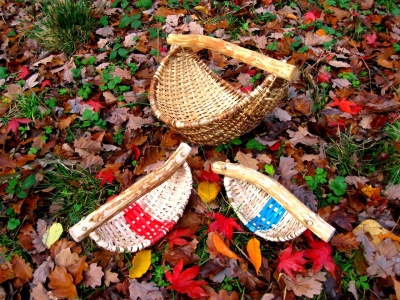
Make a split hazel 'swallow's nest' basket
- The Green Wood Centre
- 05 Jul 2025
Trees grow slowly, and in the fast modern world don’t produce the quick results many people have come to expect. Coppicing, however, sees a remarkably quick return on investment, and is as traditional as could be. The principle of coppicing is that you harvest shoots from the stump, or stool, of a cut-down tree. By cutting all the shoots from a stool together you produce roundwood for different purposes: long thin sticks for beanpoles and straight ones hurdles, thicker stakes for hedgelaying. Logs for firewood and green woodworking may be sourced from standard trees or from restoring neglected coppice.
Hazel and chestnut are prized for coppicing because their timber is durable but isn’t highly valued in larger dimensions. Oak, ash and beech, which all produce high-value logs once grown to maturity, can be coppiced, but tend not to be managed in the same quantities as hazel and chestnut.
One of the added benefits of coppicing within a woodland is that it promotes biodiversity. There will always be areas (or coupes) of coppice at different stages to provide habitat for a range of wildlife. Dormice, nightingale and pearl-bordered fritillary for example all thrive amidst the coppice, and the extra light reaching the forest floor encourages a splendid array of flora inlcuding wood anemone, dog-violet, herb-paris, primrose, and bluebells. The whole ecosystem blossoms as a result.
The market for coppice products is still small, but a growing number of people are recognising the value of this traditional form of woodland management. There is plenty of derelict coppice that needs rejuvenating.
A Brief History of Coppicing by Edward Mills
The Current Market for Coppice Products - The latest report from Professor Ted Collins, from Reading University, on the current state of the market for coppice products. Ted edited and part wrote the ‘Crafts in the English Countryside’ Report'
Stool Density as a Factor in the Quality of Hazel Coppice by Rebecca Oaks
Rebecca Oaks’ dissertation explores the relationship between hazel stool density and the quality of the yield. She also presents a series of useful recommendations for improving hazel quality. Rebecca is an experienced coppice worker based in Cumbria.
Chiltern Hazel Coppice and Thatching Spar Survey 2006 by Graham William Thorne